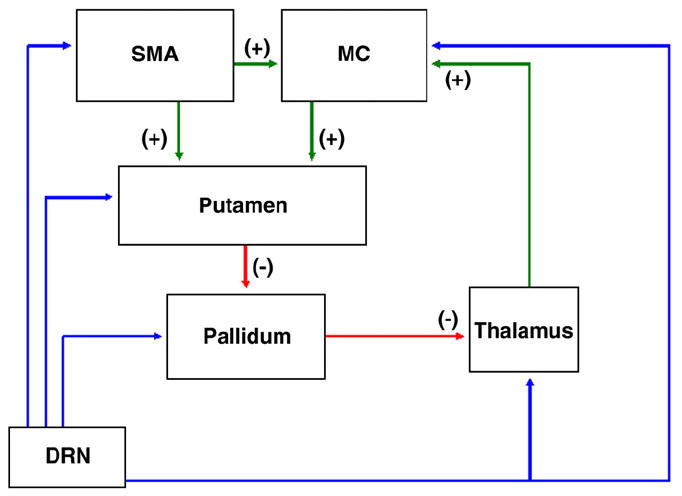Fig. 5.

Simplified basal ganglia–thalamocortical circuit. Motor circuit paths begin with input arriving to the putamen from the supplementary motor area (SMA), and primary motor cortex (MC). Output from the putamen (and parallel flow from cortex as well) then continues via direct or indirect paths (not shown). The direct path consists of an inhibitory gamma-amino-butyric-acid (GABA) projection from the putamen to the globus pallidus internal segment (GPi) and substantia nigra pars reticulata (SNr). GPi and SNr send inhibitory GABAergic projections to the ventrolateral (VL) nucleus of the thalamus. VL thalamic projections to neocortex are glutamatergic and project to MC, including the hand region in primates (Holsapple et al., 1991). The simplified result of stimulation of the direct path in the basal ganglia–thalamocortical loop is excitatory input to the cortex. The indirect path of the basal ganglia–thalamocortical loop involves GABA inputs from the putamen to the globus pallidus external segment (GPe) which in turn provides a GABAergic projection to the subthalamic nucleus (STN). The STN receives direct input from cortex as well (Alexander et al. 1990) and projects to the GPi and SNr via excitatory glutamate axons. GPI/SNr innervate the VL via GABAergic axons. The simplified result of cortical input to the indirect pathway is inhibition of excitatory thalamic input to the cortex.
